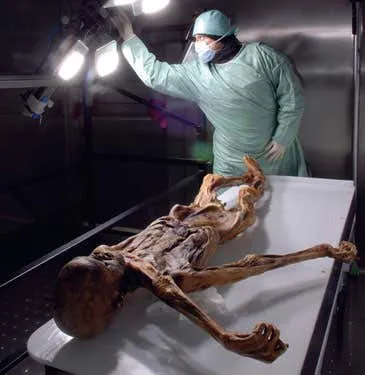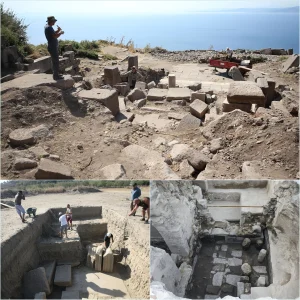Recent genetic analysis of Ötzi, the 5,300-year-old “Iceman” discovered in the Alps, reveals new details about his appearance and ancestry. Ötzi, who was found murdered with an arrow in his back, is a prehistoric celebrity drawing 300,000 visitors annually to his custom cooling chamber at the South Tyrol Museum of Archaeology in Bolzano, Italy. Although Ötzi’s remains have been remarkably well-preserved, they have not provided much insight into his appearance until now.

A new, high-quality genetic study published in *Cell Genomics* has shed light on Ötzi’s physical traits. The analysis indicates that Ötzi had dark eyes and a skin tone darker than modern inhabitants of Greece or Sicily, contrary to previous depictions of him with lighter skin. The study also reveals that Ötzi was balding, a common condition that persisted into his time.

The genetic research traces Ötzi’s lineage back to Anatolian farmers, from what is now Turkey, who migrated to Europe around 9,000 years ago. This ancestry is reflected in his genetic makeup, which shows minimal mixing with the existing hunter-gatherer populations of Europe, suggesting that his community was relatively isolated in their remote alpine environment.

The study utilized modern sequencing techniques to achieve a clearer genetic picture than previous efforts. Iain Mathieson, a population geneticist at the University of Pennsylvania, praised the updated analysis, noting the significant advancements in technology since Ötzi’s genome was first sequenced in 2012.
Ötzi was first discovered in 1991 by German hikers in the Tyrolean Alps along the Austrian-Italian border. The remarkable preservation of his body was initially thought to be due to his burial beneath snow and ice, but it is now believed that he was exposed to the elements at various times. This discovery has opened the door for similar finds as Europe’s glaciers continue to melt, revealing other ancient remains and artifacts.





